A stone fireplace without a mantle can be a striking focal point in any home, offering a blend of rustic charm and modern minimalism. While traditional fireplaces often feature a mantle as a key design element, opting to go without one can create a unique aesthetic that emphasizes the raw beauty of the stone and the simplicity of the design. Today we will talk about choosing and maintaining a stone fireplace without a mantle, from design considerations to installation and maintenance.
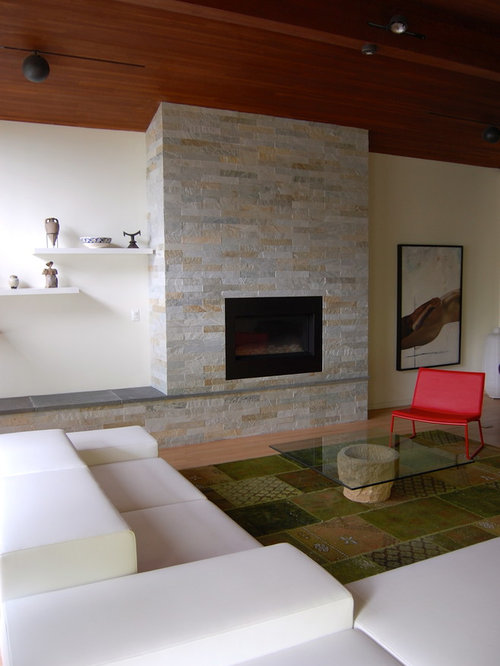
Design Considerations
Emphasizing Minimalism
A stone fireplace without a mantle embraces a minimalist design philosophy. This approach focuses on clean lines and simplicity, allowing the natural beauty of the stone to take center stage. By eliminating the mantle, the fireplace becomes a seamless part of the wall, creating a more integrated look. This minimalist style can complement a variety of interior designs, from contemporary to industrial.
When designing such a fireplace, it’s essential to consider the type of stone you will use. Different stones offer various textures, colors, and patterns. For example, sleek black slate provides a modern look, while rough-hewn limestone evokes a more rustic charm. The choice of stone should align with the overall aesthetic of your home.

Another critical design aspect is the shape and size of the fireplace. Without a mantle to break up the vertical space, the fireplace can make a bold statement if it stretches from floor to ceiling. Alternatively, a wider, lower fireplace can create a cozy, intimate atmosphere. Consider how the dimensions of the fireplace will fit into your living space and interact with other architectural elements.
Lighting also plays a significant role in the design. Since there is no mantle to hold decorative lighting, consider incorporating built-in lighting around the fireplace. Recessed lights or wall sconces can highlight the stone’s texture and enhance the ambiance of the room. The right lighting can bring out the depth and character of the stone, making the fireplace a true focal point.
In addition to aesthetics, think about functionality. Without a mantle, you lose a convenient place to display decorations or store small items. However, this can also be seen as an advantage, as it reduces clutter and maintains a cleaner, more streamlined look. You might want to incorporate built-in shelving or other storage solutions nearby to compensate for the lack of a mantle.

Integrating with Modern and Traditional Interiors
A stone fireplace without a mantle can seamlessly fit into both modern and traditional interiors, offering versatility in design. For modern interiors, opt for stones with sleek finishes and uniform colors, such as granite or marble. The clean lines and smooth surfaces of these stones enhance the contemporary aesthetic, creating a sophisticated look.
In a modern setting, the surrounding decor should complement the fireplace’s simplicity. Choose furniture with clean lines and minimal ornamentation. Neutral color palettes, with occasional pops of color, work well to keep the focus on the fireplace. Integrate materials like glass, metal, and wood to add texture and interest without overwhelming the space.
For traditional interiors, stones with more texture and natural variation, like fieldstone or river rock, are ideal. These stones provide a rustic charm that complements classic decor styles. The irregular shapes and varied colors of the stones create a warm, inviting atmosphere, perfect for traditional homes.
In a traditional setting, the decor can be more ornate. Rich fabrics, antique furniture, and detailed woodwork can surround the stone fireplace, creating a cohesive and luxurious look. Even without a mantle, the fireplace can serve as a grand focal point, enhanced by the intricate details of the surrounding decor.
Whether your style leans modern or traditional, integrating a stone fireplace without a mantle requires careful consideration of proportions and balance. The fireplace should harmonize with the other elements in the room, creating a unified look. Thoughtful placement of furniture, artwork, and accessories will ensure that the fireplace enhances the overall design rather than overpowering it.

Selecting the Right Stone
Choosing the right stone for your fireplace is crucial to achieving the desired look and feel. Each type of stone has unique characteristics that can dramatically influence the overall aesthetic. Granite, for instance, is a durable and versatile option that comes in a wide range of colors and patterns. Its polished surface adds a sleek, modern touch.
Limestone, on the other hand, offers a softer, more natural appearance. Its light colors and subtle textures make it an excellent choice for creating a serene, calming environment. Limestone can be finished in various ways, from honed to polished, allowing for customization based on your design preferences.
Sandstone is another popular choice, known for its warm tones and rustic appeal. It’s a softer stone that can be easily carved into various shapes, making it ideal for custom designs. Sandstone’s natural grain and earthy colors add a touch of nature to any room.
Marble, synonymous with luxury, brings an elegant and timeless quality to a fireplace. Its veined patterns and smooth finish make it a standout feature in any interior. However, marble requires more maintenance than other stones, as it is prone to staining and scratching.
Fieldstone and river rock offer a more organic, rugged look. These stones are typically used in rustic or traditional settings. Their irregular shapes and varied colors add a lot of character and can make the fireplace look like a natural extension of the outdoors.
When selecting the stone, also consider the practical aspects, such as heat resistance and ease of maintenance. Ensure the stone you choose can withstand the heat generated by the fireplace and is relatively easy to clean and maintain. Consulting with a professional can help you make an informed decision that meets both your aesthetic and practical needs.
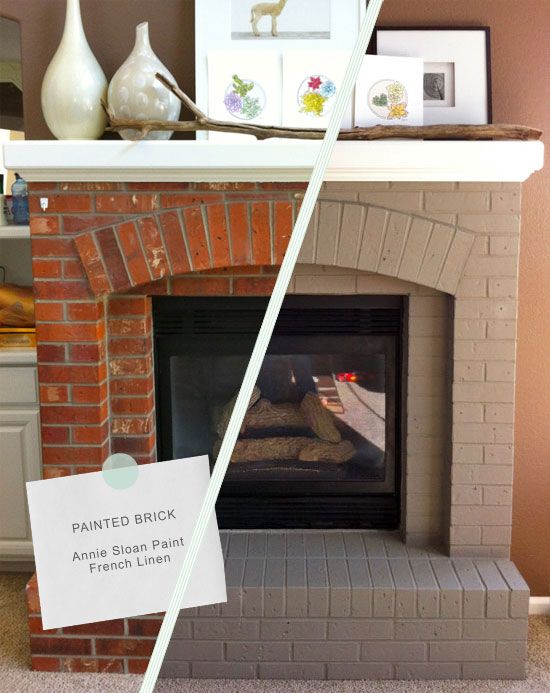
Interesting Articles You May Want to Check:
- Stone Fireplace TV Mount
- Natural Stone Fireplace Sealer
- Stone Fireplace With Hearth
- Stone Fireplace In Living Room
- Stone Fireplace Accent Wall

Installation Process
The installation process of a stone fireplace without a mantle involves several key steps and requires professional expertise to ensure safety and durability. First, prepare the area where the fireplace will be installed. This involves clearing the space, ensuring the wall can support the weight of the stone, and setting up any necessary frameworks.
Next, choose the layout of the stones. Dry-fitting the stones on the ground before installing them on the wall helps visualize the final look and make any necessary adjustments. This step is crucial for achieving a balanced and aesthetically pleasing design.
Once the layout is finalized, apply a layer of mortar to the wall and start placing the stones from the bottom up. This approach ensures that each stone is securely supported by the ones below it. Use a level to check that each row is straight and even. The process requires patience and precision, as any misalignment can affect the overall appearance and stability of the fireplace.
After placing all the stones, fill the gaps between them with mortar. This step, called pointing, enhances the structural integrity and aesthetics of the fireplace. Smooth out the mortar joints with a trowel or a pointing tool to achieve a polished look.
Allow the mortar to dry and cure properly, which can take several days. During this time, avoid using the fireplace to ensure that the stones and mortar are set correctly. Once the mortar is fully cured, clean the surface of the stones to remove any excess mortar or debris.
Finally, conduct a thorough inspection to ensure that the fireplace is safe and fully operational. This includes checking the stability of the stones, the functionality of the fireplace components, and ensuring there are no gaps or cracks that could pose a fire hazard. Professional installers can provide a final safety check and make any necessary adjustments.
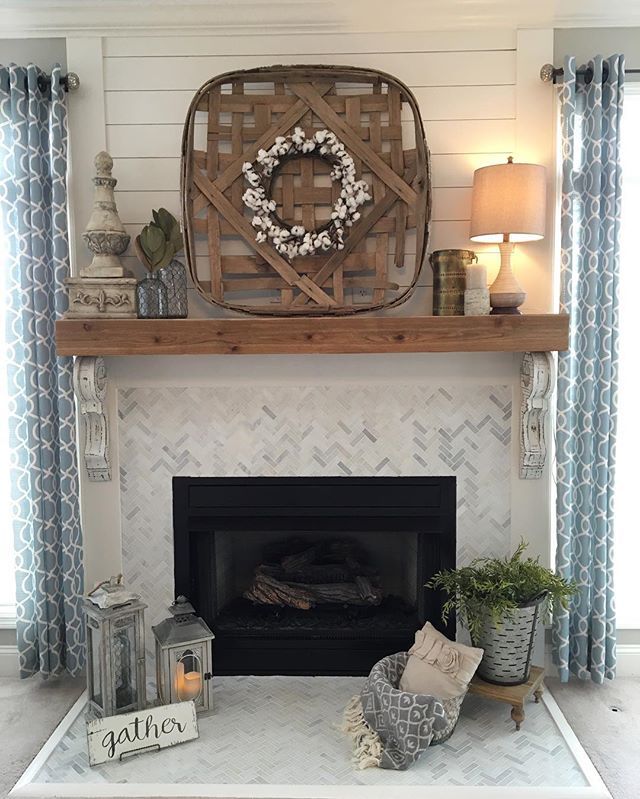
Maintenance and Care
Maintaining a stone fireplace without a mantle requires regular care to preserve its beauty and functionality. Start with routine cleaning to remove dust and soot. Use a soft brush or vacuum with a brush attachment to gently clean the stone surface. Avoid using harsh chemicals that can damage the stone.
For deeper cleaning, use a mixture of mild detergent and water. Apply the solution with a soft cloth or sponge and gently scrub the stone. Rinse with clean water and dry with a soft towel. For tougher stains, a specialized stone cleaner can be used, but test it on a small, inconspicuous area first to ensure it doesn’t damage the stone.
Inspect the mortar joints regularly for any signs of wear or damage. Cracks or gaps in the mortar can affect the structural integrity of the fireplace and should be repaired promptly. Repointing, which involves replacing or repairing the mortar, can help maintain the stability and appearance of the fireplace.
Sealing the stone is another important maintenance step. A high-quality stone sealant can protect the surface from stains, moisture, and heat damage. Apply the sealant according to the manufacturer’s instructions, typically every one to two years, depending on the type of stone and its exposure to heat and moisture.
In addition to routine cleaning and sealing, inspect the fireplace for any signs of damage or wear. Look for cracks in the stone, loose stones, or any other issues that could compromise the safety or aesthetics of the fireplace. Addressing these issues promptly can prevent more extensive damage and ensure the fireplace remains a beautiful and functional feature in your home.
Finally, use the fireplace responsibly to minimize wear and tear. Avoid burning materials that produce excessive soot or creosote, which can stain the stone. Use a fireplace screen to protect the stone from sparks and embers, and always ensure the fire is completely extinguished before leaving the area unattended.

Enhancing Your Fireplace Without a Mantle
Adding Built-In Shelving
One way to enhance the functionality and aesthetics of a stone fireplace without a mantle is by incorporating built-in shelving. These shelves can be installed on either side of the fireplace, providing additional storage space and a place to display decorative items, books, or family photos.
When designing built-in shelving, consider the style and materials that will complement the stone fireplace. For a cohesive look, use the same type of stone or a material that harmonizes with it. Wood is a popular choice, offering warmth and contrast to the stone. Opt for reclaimed wood for a rustic feel or sleek, polished wood for a more modern look.
The placement and size of the shelves should also be carefully considered. Ensure that the shelves do not overwhelm the fireplace but rather complement it. Adjustable shelves offer flexibility, allowing you to change the display or accommodate different-sized items over time.
Lighting is an important aspect of built-in shelving. Integrated lighting, such as LED strips or spotlights, can highlight the displayed items and create a warm, inviting ambiance. This lighting can also enhance the texture and color of the stone fireplace, making it stand out even more.
Incorporating built-in shelving can also improve the functionality of the space. Use the shelves to store firewood, fireplace tools, or other essentials, keeping them within easy reach while maintaining a clean and organized look. Shelves can also be a great way to personalize the space, showcasing items that reflect your taste and style.
Finally, consider the balance and symmetry of the shelving. Symmetrical shelves on either side of the fireplace create a harmonious and balanced look. However, asymmetrical designs can add a modern and dynamic touch, breaking the traditional mold and making a bold statement.

Incorporating Artwork and Decor
Even without a mantle, a stone fireplace can be beautifully decorated to enhance its visual appeal. One way to achieve this is by incorporating artwork and decor directly on the wall above the fireplace. This approach draws the eye upward and emphasizes the height and grandeur of the fireplace.
Choose artwork that complements the style and color palette of the stone. For a cohesive look, select pieces that incorporate similar tones or textures. Large-scale artwork can make a bold statement, while a gallery wall of smaller pieces can add interest and variety.
Mirrors are another excellent option for decorating a stone fireplace without a mantle. A large mirror can reflect light and make the room feel more spacious, while smaller mirrors can add a touch of elegance and sophistication. The reflective surface of a mirror also enhances the texture and color of the stone.
Consider incorporating decor items directly onto the stone surface. This can be achieved by using removable adhesive hooks or brackets to hang items such as wreaths, garlands, or decorative plates. Ensure that the items are securely attached and do not damage the stone.
Plants and greenery can also add life and color to a stone fireplace. Use wall-mounted planters or place potted plants on nearby shelves to create a natural, organic feel. The greenery contrasts beautifully with the rugged texture of the stone, adding a fresh and vibrant touch to the space.
Another creative approach is to incorporate seasonal decor. Change the decorations to reflect different holidays or seasons, keeping the fireplace area dynamic and visually interesting. This could include festive lights, seasonal flowers, or themed ornaments.
Finally, ensure that any decor added to the fireplace area does not pose a fire hazard. Keep flammable items at a safe distance from the fire and use non-combustible materials whenever possible. This will ensure that your fireplace remains both beautiful and safe.

Utilizing Color and Texture
Enhancing a stone fireplace without a mantle involves creatively using color and texture to create a visually appealing focal point. The natural variations in the stone’s color and texture can be highlighted and complemented with thoughtful design choices in the surrounding decor.
Start by considering the color scheme of the room. Choose colors that complement the natural hues of the stone. For example, if your fireplace features warm tones like beige or brown, incorporate complementary colors like soft greens, golds, or rusts in the surrounding decor. For cooler-toned stones, such as gray or blue, use colors like white, silver, or navy to create a harmonious look.
Texture is another critical element to consider. The rough, natural texture of the stone can be balanced with smoother, softer textures in the decor. Use plush rugs, soft throw pillows, and upholstered furniture to create a cozy contrast to the rugged stone. This combination adds depth and interest to the space, making it more inviting and comfortable.
Incorporate a variety of textures in the decor to enhance the overall aesthetic. For example, mix metal accents with wooden furniture and fabric accessories. The interplay of different textures creates a layered and dynamic look that draws attention to the fireplace.
Consider the finish of the stone as well. A polished stone fireplace has a sleek, modern feel, while a rough-hewn or natural finish offers a more rustic and traditional look. The choice of finish can guide the selection of other materials and textures in the room. For a polished finish, incorporate glossy surfaces and contemporary materials. For a natural finish, use more organic and rustic elements.
Lighting also plays a crucial role in highlighting color and texture. Use directional lighting to accentuate the stone’s texture and create shadows that add depth. Wall sconces or recessed lighting can be positioned to enhance the stone’s natural variations and make the fireplace stand out.
Finally, don’t forget about the floor. The flooring around the fireplace should complement the stone’s color and texture. Hardwood floors, for example, can add warmth and contrast to a stone fireplace. Alternatively, a stone hearth that extends into the room can create a seamless transition between the fireplace and the floor, enhancing the overall look.
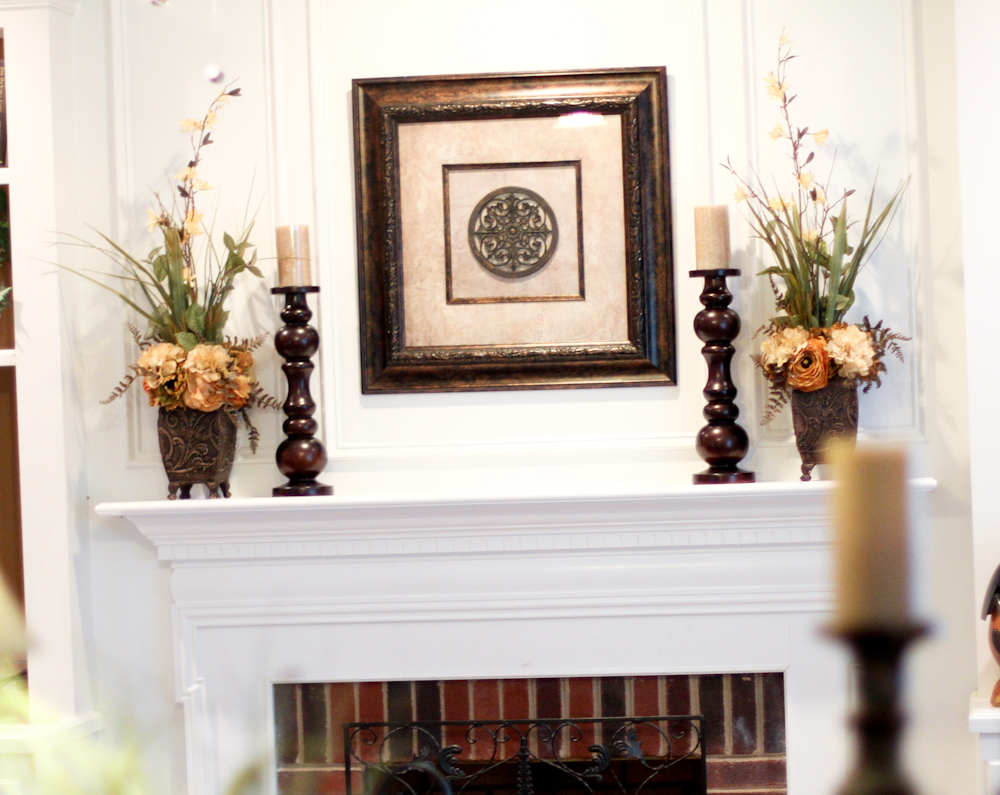
Creating a Cohesive Room Design
A stone fireplace without a mantle can serve as a stunning centerpiece, but it’s essential to create a cohesive room design that complements this feature. Start by considering the overall style and theme of the room. Whether you prefer modern, rustic, traditional, or eclectic decor, ensure that the design elements align with the fireplace’s aesthetic.
Furniture placement is crucial in creating a cohesive look. Arrange seating to face the fireplace, making it the focal point of the room. This arrangement encourages conversation and creates a cozy gathering spot. Ensure that the furniture complements the fireplace in terms of style and scale. For example, sleek, modern furniture pairs well with a contemporary stone fireplace, while more substantial, rustic pieces suit a traditional stone hearth.
Incorporate complementary colors and materials throughout the room to unify the design. Use accent pillows, throws, and rugs that pick up the colors and textures of the stone. This repetition creates a harmonious look and ties the different elements of the room together.
Window treatments and wall colors should also be considered. Choose neutral or complementary colors that enhance the stone’s natural beauty without overwhelming it. Simple, elegant window treatments, such as sheer curtains or wooden blinds, allow the fireplace to remain the star of the show.
Lighting is another critical component of a cohesive room design. In addition to task and ambient lighting, use accent lighting to highlight the fireplace. Wall sconces, floor lamps, or table lamps can be strategically placed to create a warm and inviting atmosphere. The right lighting enhances the stone’s texture and color, making the fireplace a standout feature.
Accessories and decor items should be chosen carefully to complement the stone fireplace. Opt for pieces that reflect the room’s overall style and color scheme. Avoid cluttering the space with too many items; instead, select a few meaningful pieces that enhance the design. Artwork, vases, and sculptures can add personality and interest without detracting from the fireplace.
Finally, consider the overall balance and symmetry of the room. Ensure that the fireplace is the central focus, with other elements arranged around it to create a cohesive and well-proportioned look. This approach will make the room feel harmonious and inviting, with the stone fireplace serving as a stunning centerpiece.
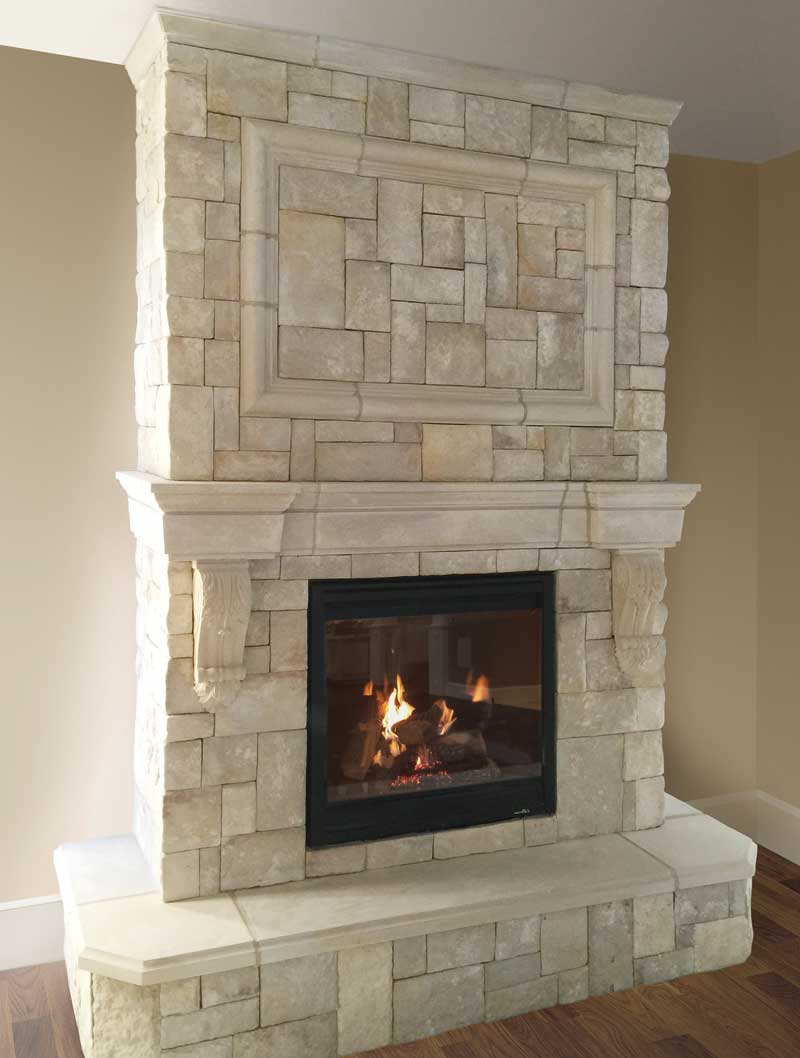
Common Mistakes to Avoid
While designing and maintaining a stone fireplace without a mantle can be rewarding, there are common mistakes to avoid to ensure a successful outcome. One frequent error is selecting the wrong type of stone. Choosing a stone that doesn’t align with the room’s style or the fireplace’s function can result in a discordant look or practical issues like excessive maintenance or heat damage.
Another mistake is neglecting the structural requirements. A stone fireplace, especially one without a mantle, can be quite heavy. Failing to ensure that the wall and floor can support this weight can lead to structural problems. Always consult with a structural engineer or a professional installer to assess the load-bearing capacity of the area.
Improper installation is another pitfall. DIY installation can lead to uneven stones, weak mortar joints, and an overall unprofessional appearance. It’s crucial to hire experienced professionals who have the skills and tools to install the stone correctly and ensure the fireplace’s stability and safety.
A lack of proper sealing and maintenance can also cause problems. Stone surfaces are porous and can absorb stains, soot, and moisture if not properly sealed. Failing to reseal the stone periodically can lead to discoloration and deterioration. Regular maintenance is essential to keep the stone looking its best and to extend its lifespan.
Ignoring the room’s overall design can result in a fireplace that feels out of place. The stone fireplace should be an integrated part of the room’s aesthetic, not an isolated element. Consider how the fireplace interacts with the furniture, color scheme, and decor to create a harmonious look.
Lastly, safety is paramount. Placing flammable decor too close to the fireplace, failing to use proper screens or guards, and neglecting regular inspections can create fire hazards. Always follow safety guidelines and best practices to ensure that the fireplace is both beautiful and safe to use.

What are the benefits of a stone fireplace without a mantle?
A stone fireplace without a mantle offers a minimalist and contemporary aesthetic that can make a dramatic statement in any room. This design allows the natural beauty of the stone to be the focal point without any distractions. It can create a clean, streamlined look that is versatile and can fit into various design styles, from modern to rustic.
Additionally, eliminating the mantle reduces clutter and simplifies the maintenance of the fireplace area. Without a mantle, there is no need to dust or clean around decorative items typically placed on it. This design also provides more flexibility in decorating the space above the fireplace, allowing for larger pieces of artwork or other decorative elements.
How do I choose the right stone for my fireplace?
Choosing the right stone for your fireplace depends on several factors, including your design preferences, the overall style of the room, and practical considerations like durability and maintenance. Granite and marble are excellent choices for a sleek, modern look, offering a range of colors and polished finishes. Limestone and sandstone provide a more rustic, natural appearance with softer tones and textures.
Consider the stone’s heat resistance and how easy it is to clean and maintain. Consulting with a professional can help you understand the characteristics of different stones and how they will perform in your specific environment. Samples can also be useful to see how different stones look in your space under various lighting conditions.
How do I maintain a stone fireplace without a mantle?
Maintaining a stone fireplace without a mantle involves regular cleaning and periodic sealing to protect the stone from stains and damage. Dust and soot can be removed with a soft brush or vacuum cleaner with a brush attachment. For deeper cleaning, use a mild detergent and water, applied with a soft cloth or sponge. Avoid harsh chemicals that could damage the stone.
Sealing the stone periodically, typically every one to two years, helps protect it from moisture, stains, and heat damage. Regularly inspect the mortar joints for any signs of wear or damage and repair them as needed. Avoid burning materials that produce excessive soot or creosote, and use a fireplace screen to protect the stone from sparks and embers.
Can I install a stone fireplace without a mantle myself?
While it is possible to install a stone fireplace without a mantle yourself, it is generally recommended to hire professionals for this task. The process involves several complex steps, including preparing the wall, properly applying mortar, and securely placing the stones. Professional installers have the expertise and tools to ensure the fireplace is structurally sound, safe, and aesthetically pleasing.
DIY installation risks include uneven stones, weak mortar joints, and potential safety hazards. If you decide to attempt the installation yourself, ensure you have a thorough understanding of the process, the necessary tools, and the proper safety measures.
How can I decorate a stone fireplace without a mantle?
Decorating a stone fireplace without a mantle involves focusing on the space above and around the fireplace. Large artwork, mirrors, or decorative panels can be hung directly on the wall above the fireplace to create a striking visual impact. Consider using removable adhesive hooks or brackets to hang items without damaging the stone.
Built-in shelving on either side of the fireplace can provide additional storage and display space for books, plants, or decorative items. Incorporate lighting to highlight the stone’s texture and create a warm ambiance. Seasonal decorations can also be used to keep the fireplace area dynamic and visually interesting, ensuring that the decor complements the overall style and color scheme of the room.

Forget the fussy frills and ornate embellishments – the modern fireplace is all about clean lines and minimalist elegance. And what better way to achieve this than with a stone fireplace, devoid of the traditional mantle? This design choice, far from being austere, breathes new life into the hearth, creating a focal point that’s both striking and uncluttered. Imagine a rough-hewn stone surround, its natural textures and earthy tones grounding the space, while the absence of a mantle allows the fire’s mesmerizing dance to take center stage. This is a fireplace that whispers of rugged beauty and timeless simplicity, a sanctuary where the warmth of the flames is the only adornment you need.
Related Posts:
- Stone Fireplace Cleaning Companies
- Stone Fireplace Kits Indoor
- Stone Fireplace Materials
- Stone Fireplace Entertainment Center
- Stone Fireplace With White Mantle
- Black Stacked Stone Fireplace
- Stone Fireplace No Mantle
- Stone Fireplace For Wood Burning Stove
- Stone Fireplace Contractors
- Brick And Stone Fireplace Ideas